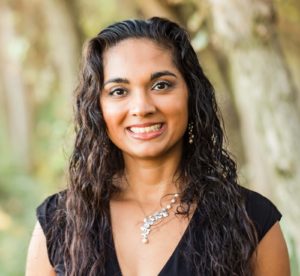Trying something new and thinking outside the box is always challenging, both within and outside academia. Exploring alternative paths outside academia can be daunting, but you can also have a great time seizing every opportunity available. To shed a bit of light on this quest, it is my pleasure to interview Dr Alka Tripathy-Lang. Thank you, Alka, for accepting this interview!
Alka received her PhD from Arizona State University and worked as a postdoc at Berkeley Chronology Center, California. She is currently a freelance science communicator and a science writer. She has been writing science articles for Temblor, American Geophysical Union’s Eos, and reviewing books for Science News.
What has motivated you to do science communication?
During my postdoc, I became a mother. During that time, I realised that I didn’t want to pursue an academic route. I didn’t quite know how to proceed, but great mentors helped me along the way. I began doing contract work for the Incorporated Research Institutions for Seismology (IRIS), and one of my responsibilities was (and still is) to write non-technical science highlights for the IRIS website. I discovered just how much I enjoy distilling complex research into more digestible components for the general public. If you want to read more about my path out of academia, check out this EGU Seismology blog post.
What do you want to say to the current researchers who are looking for a career outside academia?
Cultivate your network. Another, less scary way to say that is: make friends and develop relationships across disciplines. A wide range of experiences is important for creativity and innovation. All those skills you learned while focusing on a narrow specialisation can be translated to any number of career paths. Reach out directly to people who have followed a path you might be interested in.
How do you decide which career is good? Is there a right time for it?
Everyone is different. Some people know what they want to do with their adult lives when they’re children, and others don’t find their true path until much later. Some people change directions multiple times, and each experience contributes to their success. Are you a Tiger Woods who started golfing before the age of two? Or are you a Vincent van Gogh who didn’t really begin to paint in earnest until the final year of his life? Most of us are somewhere in between, but my point is that there’s no single path to success.
What are some of the opportunities that, in your opinion, await outside academia?
Anything and everything. A week after I defended my dissertation, one of my committee members told me that no matter what I chose to do, I could do it. His own path was somewhat circuitous, taking him away from large research universities for a full 15 years before he returned to an R1 University for a tenure-track position. He told me that people advised him against that route, telling him that you can never return once you leave. Clearly, that wasn’t true. I think of his advice often, and I pass it along to others. I can’t tell you what path to pursue, but I can tell you that even if you choose to leave academia, that doesn’t shut the door completely.
A word of suggestion for the graduate students.
Try out lots of different things as a student. Take lots of classes. Pick up hobbies outside of academia. Enjoy that time of learning.
There’s always a tug-of-war between choosing the most apparent career everyone expects or trying something unconventional off the classic success benchmark. It is never easy to decide, but as Alka mentioned, there’s no right or wrong time for taking that decision. Try everything and anything and take the plunge on every opportunity laying our path.
Post edited by Valeria Cigala, Asimina Voskaki.

